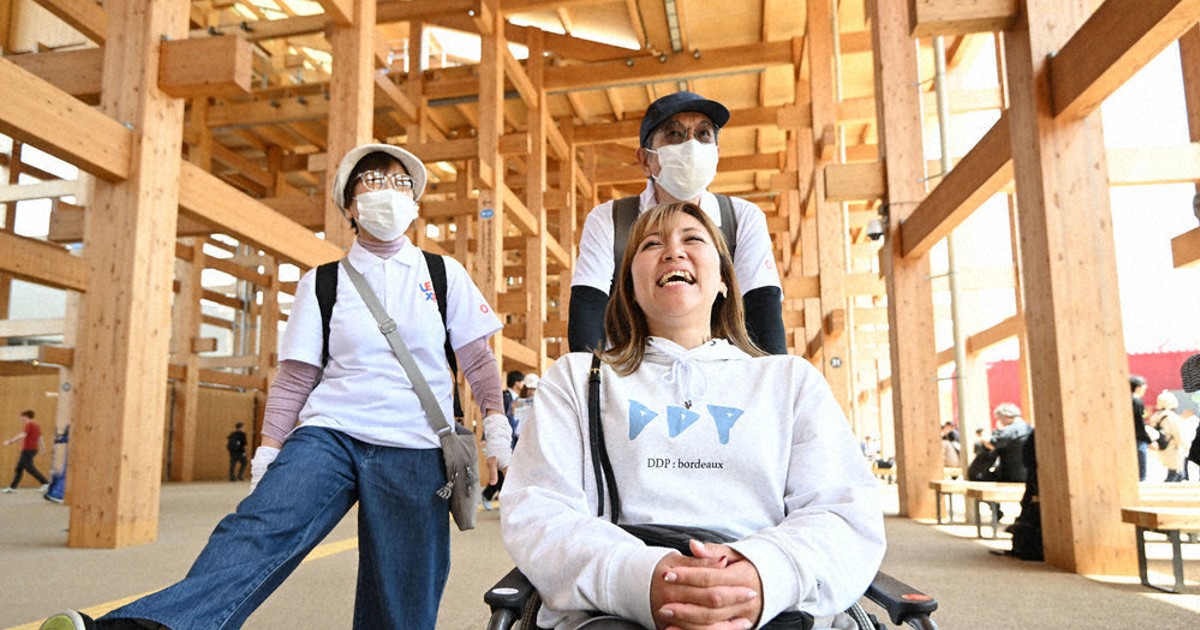EXPO 2025: A Focus on Wheelchair Accessibility and Inclusive Design
The upcoming World Expo 2025 in Osaka, Japan, is promising to be a landmark event, not just for its technological advancements and cultural showcases, but also for its ambitious commitment to inclusivity. A key element of this commitment is a strong focus on wheelchair accessibility, ensuring that visitors with disabilities can fully participate and enjoy the experience. This article delves into the Expo's accessibility initiatives and what they mean for attendees with mobility challenges.
Accessibility Features: Paving the Way for All
Organizers are leaving no stone unturned in their efforts to make EXPO 2025 accessible to wheelchair users. This includes a wide range of features designed to overcome physical barriers and enhance the overall visitor experience:
- Ramped entrances and pathways: Expect smooth, wide ramps throughout the Expo site, eliminating the need for strenuous stair climbing.
- Accessible restrooms: Strategically located and designed to meet the needs of wheelchair users, including ample space and appropriate fixtures.
- Wheelchair rentals: Services for renting wheelchairs are anticipated, easing the burden on visitors who may not wish to bring their own.
- Signage and wayfinding: Clear, accessible signage using braille and large print will be readily available to assist with navigation. Digital maps and interactive wayfinding systems are also planned.
- Accessible transportation: The Expo site's proximity to public transportation is being enhanced, and accommodations are being made for convenient access for wheelchair users.
- Dedicated seating areas: Relaxation zones with designated seating for wheelchair users will be available throughout the Expo grounds.
- Accessible information: All essential information, including schedules, maps, and exhibitor details, will be available in accessible formats.
Beyond the Basics: A Holistic Approach
EXPO 2025's commitment to accessibility goes beyond simply meeting minimum requirements. It's a proactive approach that integrates accessibility into every aspect of planning and design. This holistic approach promises a truly inclusive experience for wheelchair users.
- Sensory considerations: The organizers are actively considering the sensory needs of attendees, minimizing potential overstimulation and ensuring a comfortable environment for those with sensory sensitivities.
- Assistive technology support: Information about available assistive technologies and support services will be readily accessible to visitors.
- Staff training: Expo staff will receive comprehensive training on disability awareness and how to provide assistance to visitors with mobility challenges.
Setting a New Standard for Inclusive Events
The ambitious accessibility plans for EXPO 2025 are setting a new standard for large-scale international events. It demonstrates a significant shift in prioritizing the inclusion of people with disabilities. This commitment serves as an inspiring example for future events around the world, highlighting the importance of universal design and accessibility as fundamental aspects of event planning.
Preparing for Your Visit: Tips for Wheelchair Users
While the Expo is dedicated to making the experience seamless, it's always wise to plan ahead:
- Check the official website: The official EXPO 2025 website will have the most up-to-date information on accessibility features and services.
- Notify your travel companions: Ensure your travel companions are aware of your accessibility needs.
- Contact the Expo organizers: If you have specific questions or require additional assistance, don't hesitate to contact the event organizers directly.
EXPO 2025's strong emphasis on wheelchair accessibility demonstrates a significant step towards creating a more inclusive and equitable world. By fostering an environment where everyone can participate fully, the Expo is setting a powerful precedent for future events and emphasizing the importance of accessible design for all.
Keywords: EXPO 2025, Osaka, Japan, Wheelchair Accessibility, Disability Inclusion, Accessible Design, Universal Design, Inclusive Events, Accessibility Features, Mobility Challenges, Assistive Technology, Sensory Considerations.
